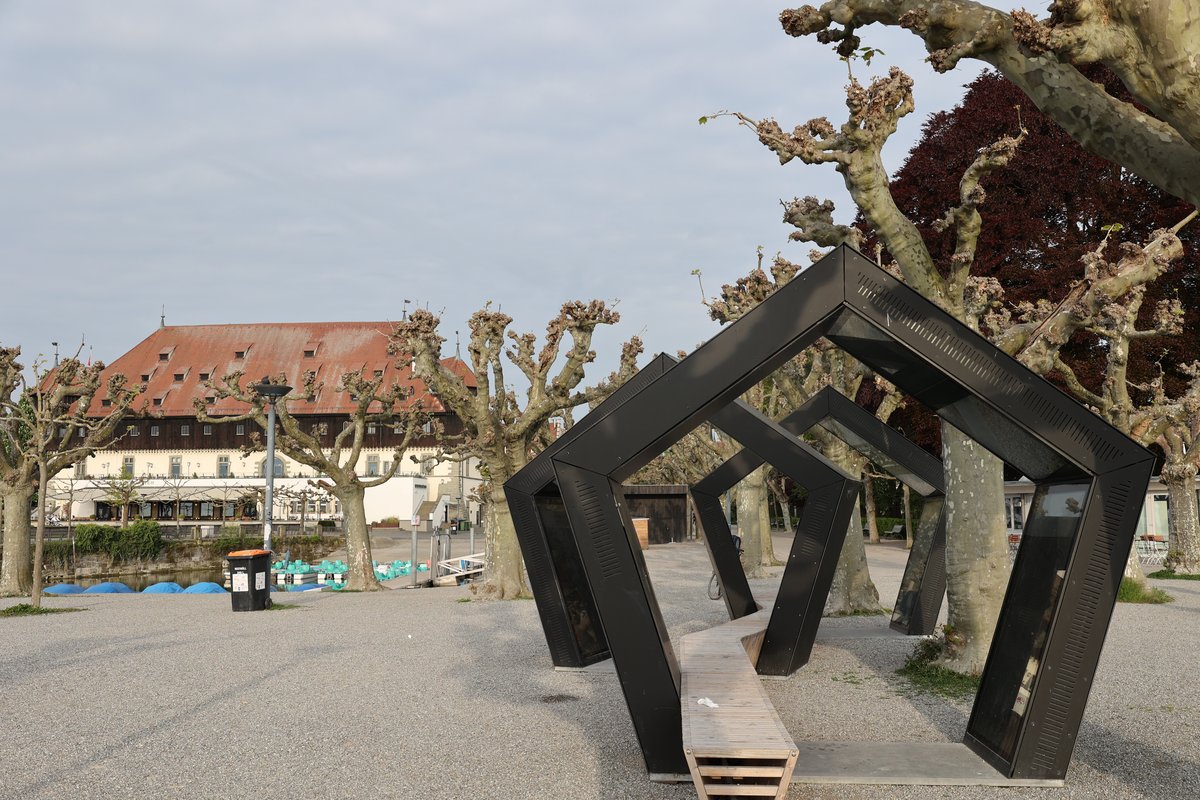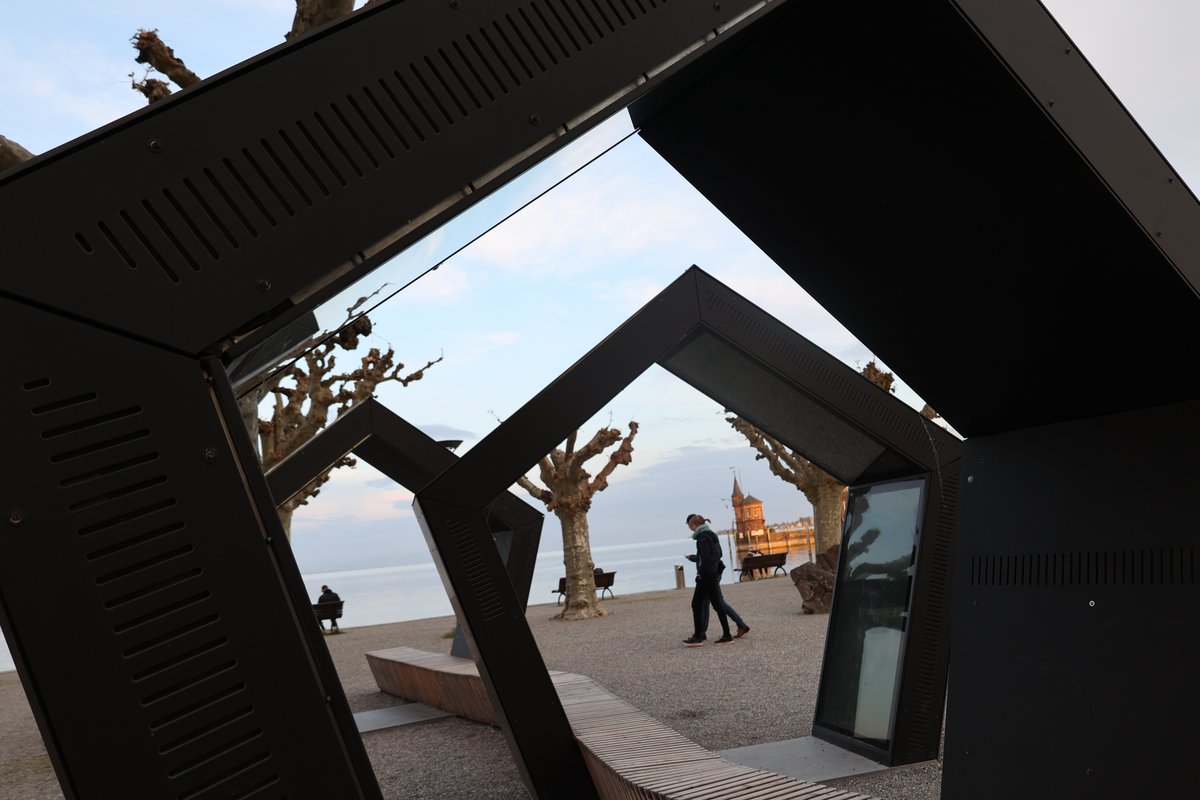
Collective Behaviour Video Series
How do flocks of birds and school of fish manage to move in perfect synchronisation and to coordinate within the swarm? How do migratory birds, like storks, find their global flight routes? How can we succeed in exploring the collective sense of animals, and which technologies play a role in this? Several Kon.Screen videos present the scientific work and research infrastructure of the Cluster of Excellence "Centre for the Advanced Study of Collective Behaviour" (CASCB) to the public.

About the Kon.Screen
You may have seen the three black pentagons standing like little houses in public squares in Konstanz. Since June 2021, they can be found at various locations in the city. Anyone who sits inside experiences hands-on science on large-format screens and learns about the latest research projects at the University of Konstanz. Now we are showing the videos about the CASCB on our website.
Collectives of our Earth
Collective behaviour is all around us. Iain Cozin explains how computer vision has revolutionized the study of animal swarms.
External Page
To view this content (source: www.xyz.de ), please click on Accept. We would like to point out that by accepting this iframe, data could be transmitted to third parties or cookies may be stored.
You can find more information on our privacy policy .
Imaging Barn: From barn to high-tech laboratory
The Imaging Barn is a collaborative project between the "Centre for the Advanced Study of Collective Behaviour" at the University of Konstanz and the Max Planck Institute of Animal Behavior near Radolfzell. Located in a traditional 18th-century barn at the MPIAB campus, it is a facility for studying the dynamics of highly naturalistic interactions, such as when animals or people meet, eat, or make decisions together.
External Page
To view this content (source: www.xyz.de ), please click on Accept. We would like to point out that by accepting this iframe, data could be transmitted to third parties or cookies may be stored.
You can find more information on our privacy policy .
Understanding animal networks
Seeing the world through the eyes of birds: Welcome to ICARUS! The ICARUS antenna system on the International Space Station (ISS) enables animal researchers worldwide to explore the migratory movements of animals via transmitters. This helps with the analysis of global animal migrations and betters the understanding of the ecological connections of thousands of animal movements. Computer scientists at the University of Konstanz, led by Falk Schreiber, give the movement data of birds a visual form and thus make bird migrations tangible.
External Page
To view this content (source: www.xyz.de ), please click on Accept. We would like to point out that by accepting this iframe, data could be transmitted to third parties or cookies may be stored.
You can find more information on our privacy policy .
